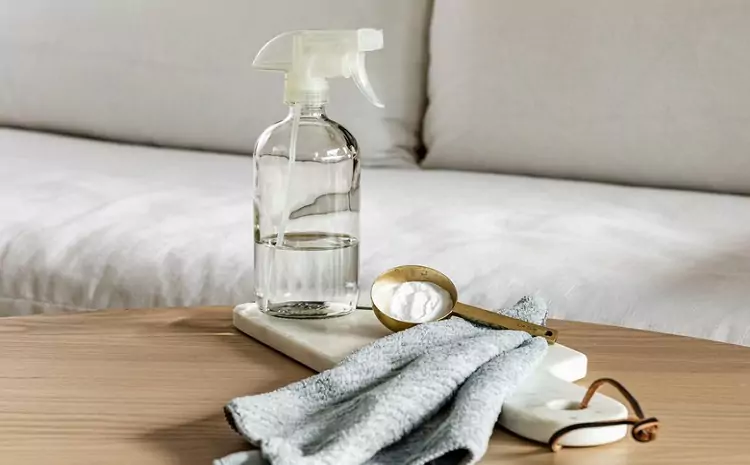If you don’t want to hire a professional deep cleaning service for your furniture, here are some tips to help you clean your sofa yourself. Before tackling a couch cleaning, it’s essential to identify both the type of stains and the upholstery fabric involved. These factors determine the selection of cleaning products and methods required to achieve the best results.

Comprehensive Guide to Upholstered Furniture Care
Our universal plan for any sofa includes:
- Assessing the level of soiling and identifying the fabric type.
- Choosing appropriate cleaning agents and tools for the fabric.
- Dust and solid particulate removal.
- Stain removal.
- General cleaning.
- Rinsing with clean water and fabric conditioners.
- Furniture drying.
Dust Removal Techniques
The simplest way to eliminate dust is using a vacuum cleaner with a special brush attachment or a steam generator. For pile fabrics, which require careful handling to maintain their look and integrity, a different approach is needed. Lay a clean, damp, white cotton sheet over the sofa after soaking it in a mild soapy solution and thoroughly wringing it out. Then, beat the dust out with a beater; this traps the dust in the wet sheet and prevents it from dispersing into the air.
Dealing with Greasy Stains
Greasy stains may come from oily food spills or body contact with the upholstery. Street clothes and pets also contribute to this issue. Each material requires a specific approach:
- Regular Fabric: Attach cheesecloth or a damp cloth soaked in a saline solution to the vacuum cleaner nozzle. The salt helps remove greasiness and dust.
- Velvet: Treat with a solution of salt and a small amount of vinegar, and manually clean with a cloth, no vacuum needed.
- Velour: Use a microfiber cloth and a mild soap solution for cleaning. Remove moisture afterward with a soft, dry towel.
- Tapestry: Only dry cleaning should be used as moisture can fade the colors.
- Suede and Nubuck: A special cleaning product and a brush designed for the texture and density of these materials are necessary.
- Genuine and Synthetic Leather: Wipe the surface with a slightly damp cloth without additives before treating with specialized cleaning solutions.
Important: DIY cleaning is feasible only if the stains are not set-in. For older or more stubborn stains, professional cleaning services are recommended to avoid damaging the fabric or altering its color.

Stain and Smudge Removal
Here’s how to deal with common types of stains:
- Inks and markers: Treat with foam from bar soap, then wipe off with a disinfectant-soaked cloth.
- Nail polish: Use acetone or nail polish remover for textiles; special cleaning agents are needed for other materials.
- Chewing gum: Chill the gum with ice to make it brittle, then gently scrape it off the fabric.
- Paint: Fresh stains from oil, gouache, or watercolors can be cleaned with soap foam. For dried stains, use a scraper and then treat with soap or a cleaning agent like Vanish.
- Human urine: For light fabrics, a mix of vinegar, lemon juice, and water works well; for darker fabrics, a diluted iodine solution is effective in removing stains and odors.

If DIY Cleaning Fails
If your efforts to clean your couch at home are unsuccessful, it’s wise to consult professionals. Contacting a cleaning service through options like ‘professional deep cleaning services’ or ‘apartment cleaning services‘ ensures your upholstery receives the expert care it needs to look its best without risking damage. These services offer comprehensive cleaning solutions that tackle tough stains and odors, restoring your furniture to pristine condition.
Regular maintenance and immediate stain removal can significantly prolong the life and appearance of your sofa. Using covers can protect against everyday wear and tear, but many prefer to show off their stylish furniture. For everyday cleaning, gentle vacuuming with soft attachments and occasional damp wiping will suffice. Most stains won’t become problematic if addressed promptly.

